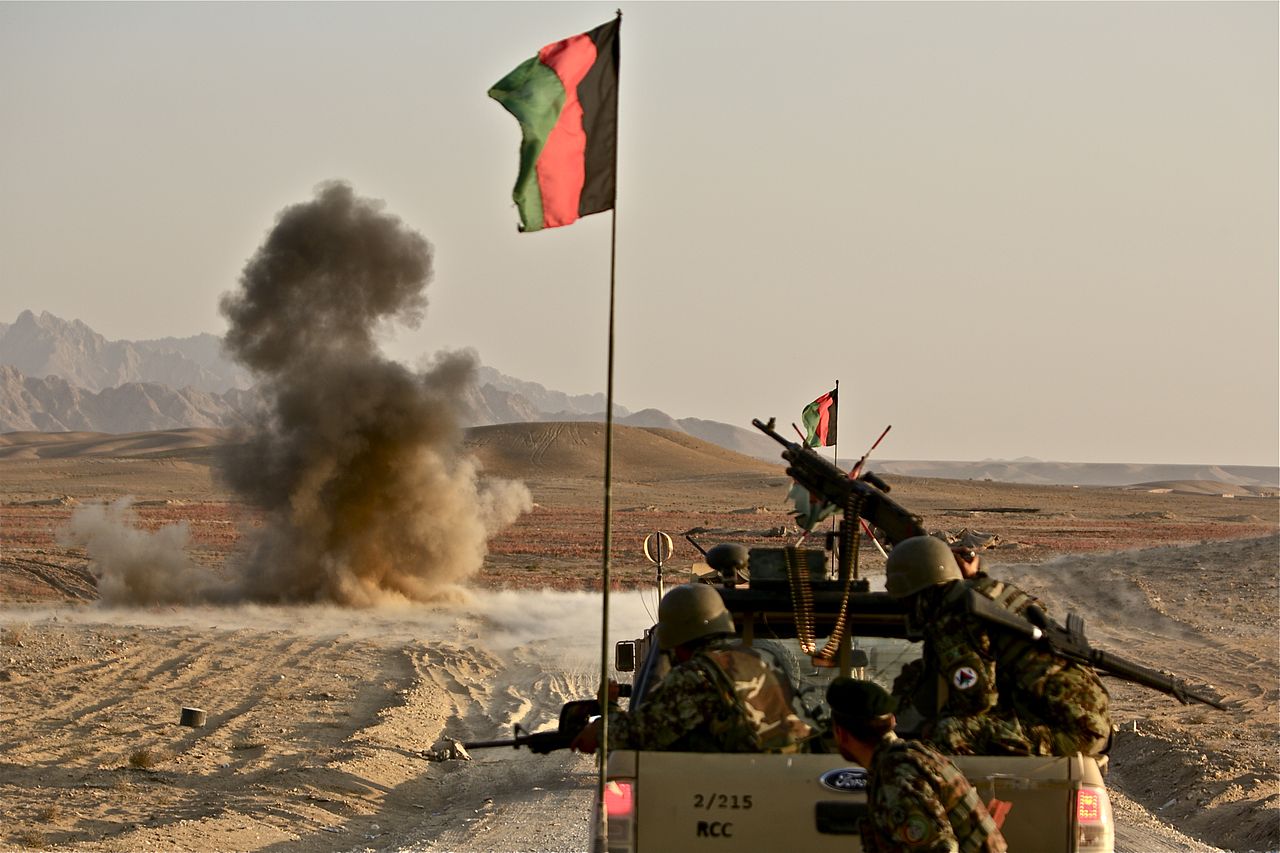
The incoming Trump administration needs to send “a clear message of continued commitment” to the Afghan government that the United States will continue to support its decades-long struggle with the Taliban and other terrorist organizations, a former ambassador to Kabul said Wednesday.
James Cunningham, now with the Atlantic Council, told a Heritage Foundation forum that “there has not been that clarity of messaging” from the Obama administration. Such a message would also reassure the United States’ 38 coalition partners to continue their efforts to bring stability not only to Afghanistan but to the region.
“Afghanistan is an expression of the broader conflict” with Islamic extremism being waged in “a zone of crisis” stretching from North Africa to South Asia, he said.
Hamdullah Mobib, the Afghan ambassador to the United States, said he understands how his countrymen, the United States and the coalition are “weary of this fight” after 15 years, but “the rationale for United States involvement in Afghanistan remains the same” as it was following the terrorist attacks on Sept. 11, 2001.
The continuing “considerable threats from the Taliban … provide oxygen for other terrorist groups,” such as the Haqqani Network, operating from safe havens in Pakistan and now the Islamic State.
“Afghanistan and its forces alone may not be able to defeat” them, Mobib said at the Washington, D.C., think tank event.
The United States military estimates that about 10 percent of the population falls under Taliban control, 20 percent of the population live in contested areas and 70 percent of Afghanistan is under control of the National Unity Government of President Ashraf Ghani and its chief executive officer Abdullah Abdullah.
Political divisions in the unity government, though, “do have an effect on how [and where] security forces operate,” Scott Smith, senior mediation advisor for the U.N. Department of Political Affairs, said at the event.
“Afghanistan national security forces are fragile,” he said. Speaking of the 352,000 members of the defense and security forces, he added, “It’s true they held the line” in previous fights, but they still show “some serious weaknesses” such as attrition through casualties and desertion, corruption that includes selling arms to the Taliban, and low morale.
The international coalition has about 13,000 soldiers in the country providing training for the Afghans, logistics, intelligence and air support. About 6,300 come from countries other than the United States. In addition, the United States has another 2,000 service members directly engaged in military operations alongside the Afghans.
The budget request for Fiscal Year 2017 for military operations in Afghanistan is $3.5 billion. “This is what the United States spent at the height of the war every 10 days” when it had 100,000 soldiers and Marines there, said Luke Coffey of the Heritage Foundation. “This is a bargain.”
While the Afghans will have to work out among themselves a path to reconciliation, the fact that Pakistan continues to harbor terrorist groups such as the Haqqanis complicates the matter.
Cunningham bluntly put it: “What we’re doing in Pakistan … isn’t working.” Quoting retired Army Gen. Jack Keane’s recent testimony to the Senate Armed Services Committee, he said as long as those safe havens exist the chances of ending the fighting are “dismal to non-existent.”
Coffey said, “In the North [of Afghanistan], we’ve seen an increase in fighting” created as Pakistan moved against terrorists it felt threatened its own stability. As a result, Abdul Rashid Dostum, a regional Uzbek leader and vice president in the national government, “has gone rogue” trying to cement his power base there. The fighting in the north has spurred a reaction in Moscow, with the Russians offering to help defend Tajikistan’s borders with Afghanistan. Tajikistan was a republic in the former Soviet Union.
There also has been a fragmentation of international cooperation in addressing terrorism in the region generally and Afghanistan particularly. Smith said Russia, China and Pakistan are falling into one bloc with different aims than the Afghans and the larger coalition. Moscow has opened its own talks with the Taliban.
The Taliban remains strongest in the country’s southern provinces with its large Pashtun population, the ethnic base of the movement, he said.
While the idea of the United States “talking to the Taliban” remains politically changed domestically, it has to be done, the panelists agreed. But “we get into trouble trying to stage manage and orchestrate” events by ourselves, Cunningham said. “We need to be respectful of our limits” in any future negotiations over the future of Afghanistan.
To end the fighting and begin reconciliation, Smith said, “it’s not about dividing up ministries, not about dividing up provinces.” The key is “to find out what [the Taliban] really want.” He noted divisions within the Taliban itself having undergone two leadership changes in recent years.
In answer to a question about why Afghanistan remains important to the United States and the coalition, Ambassador Mohib said, “we are fighting [a] shared threat. We have mutual interests” in promoting political stability, security and economic growth.





